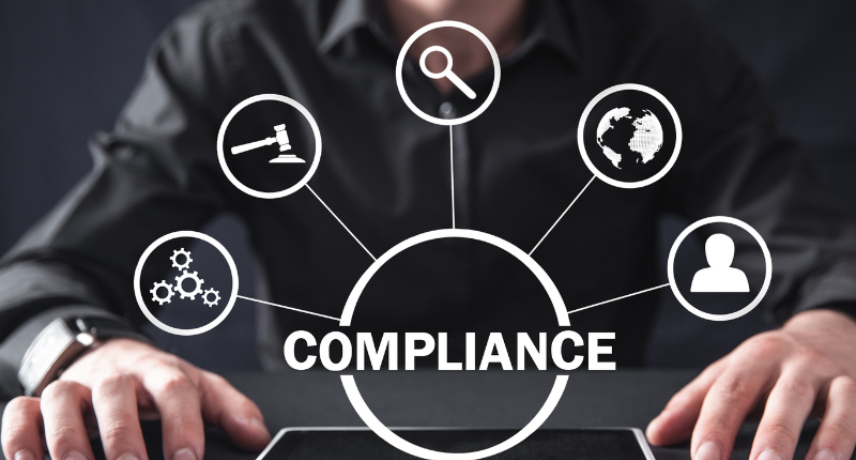
Enquiry Form
5 Signs You Need Compliance Management Software—Now
In the era of agility, where businesses have to keep moving at a rapid pace, remaining industry-compliant is not merely to keep fines at bay anymore, but rather to build trust, guarantee transparency in operations, and remain competitive. With the increasing complexity of regulations and the growth of businesses, compliance with these regulations can become a grave liability when addressed manually or through old tools.
Compliance management software is useful in this situation. Not sure when it is time to invest in one? Here are five sure signs your organization needs to make the switch right now.
1. You're Drowning in Manual Processes
In case your compliance team is working with spreadsheets, paper checklists, and stand-alone tools to manage regulatory requirements, then you are in trouble. The presence of manual processes does not only slow down your processes, but also there is the possibility of human error and inconsistency in the data.
An excellent regulatory compliance tool would automate the mundane tasks such as policy updating, audit scheduling, and documentation. It offers a central location to administer compliance activities, save massive amounts of effort, and promote accuracy.
2. You’re Missing Deadlines or Failing Audits
Failure to meet deadlines on compliance may imply a heavy fine, loss of reputation, and criminal implications. In case your organization has suffered audit failures or last-minute drills to collect documentation, it is probably a good indication that your system is not working!
An audit management tool, which is one of the main tools of compliance management, will assist you in monitoring deadlines, being in a state of readiness, and keeping everything organized. It is possible to keep the audit trails, delegate duties, and create reminders about recurring activities—all at the same place.
3. You Operate in a Heavily Regulated Industry
Such industries are financial, healthcare, manufacturing, and IT, which constantly face the scrutiny of the regulators. It can be the HIPAA, GDPR, SOX, and ISO standards, and the requirements are tedious and not always stable.
The organizations in these industries require automated compliance software specific to their own regulations. There are templates and frameworks provided by such platforms that help you be compliant and do not require you to reinvent the wheel.
4. You Lack Real-Time Visibility into Compliance Status
When the question, "Are we compliant right now?" cannot be answered by a leadership team. With confidence, it is a red flag. Real-time visibility is also often missing, so that your compliance posture may be reactive instead of proactive.
An effective compliance monitoring tool will feature dashboards and reporting features with clear summaries that give you a real-time view of your compliance status. The policy adoption rates, the amount of work pending, and the level of risk are all present in a single location, allowing them to make superior decisions based on the information.
5. You’re Expanding Across Regions or Business Units
As your organization expands in terms of size (geographically or structurally), the complexity of managing multiple compliance frameworks, departments, and risk profiles grows with it. Centralizing compliance using scalable software is not a luxury; in that situation, it is vital.
Enterprise compliance solutions are scalable by department, location, and subsidiary. They are streamlined, eliminate duplication, and standardize procedures or make global compliance management efficient and consistent.
The Relevance of Investing in Compliance Software
With the help of compliance automation solutions, your company can not only minimize the possibility of the non-compliance risk but will also achieve operating efficiency and peace of mind. The tools assist with handling data privacy policies, employee training, risk assessments, and incident reporting, with a maintained up-to-date audit trail.
Risk and compliance software is key during the period of data-driven decision-making and regulatory responsibility. It closes the gap between compliance, IT, and leadership and keeps everyone on the same page.
What a Compliance Management Solution Should Have
The following are the must-have features when selecting the right compliance management system:
• real-time reporting and dashboards
• Automatic reminders and alerts
• Document and policy management
• Access control used by roles
• Integration with the existing business software
These features enhance compliance as well as lower the administrative burden overall.
Conclusion:
When your company is wrapping up with old-fashioned procedures, late deadlines, or increasing regulatory issues, this is the right time to invest in compliance management software. It is not a tool; it is a strategic value that saves your brand, keeps you in regulatory compliance, and helps you position your organization toward a sustainable future.
Do not allow a compliance crisis to drive you into action. Be on the offense, be compliant, and provide your business with the tools it requires to succeed in a regulation-driven world.